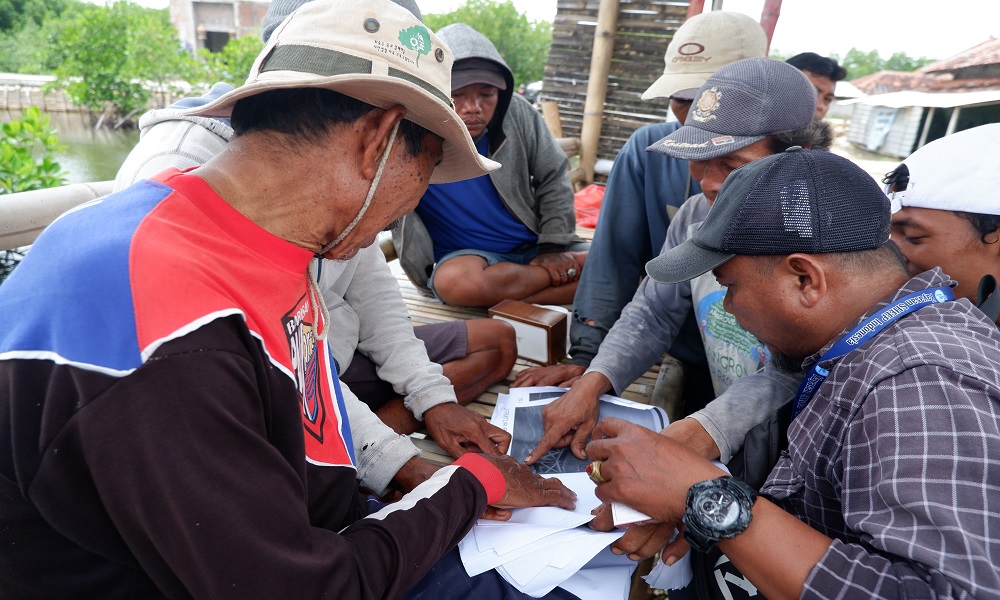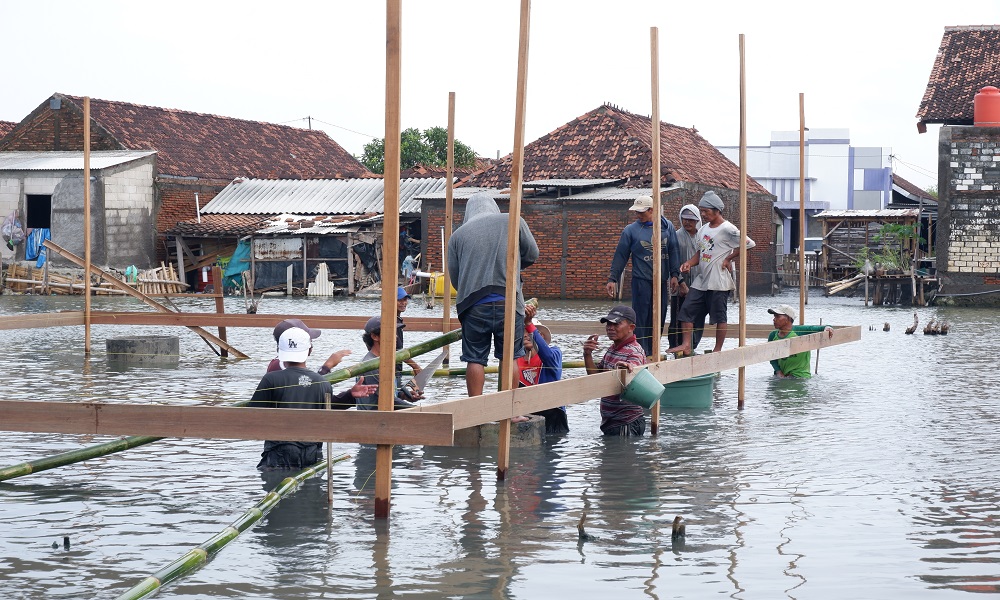
Sayung District, Demak Regency, has long faced the threat of increasingly severe tidal flooding since 1998. The continuous tidal inundation has drastically altered the lives of the local community, who previously relied on agriculture but have been forced to shift to fisheries and aquaculture. Additionally, many residents' homes have been submerged or damaged due to coastal erosion and rising sea levels. In recent years, this situation has been exacerbated by a clean water crisis caused by seawater intrusion into freshwater sources. The conversion of agricultural land into tidal water ponds has not only forced a shift in livelihoods from farming to fishing but has also led to potential conflicts due to unclear land ownership boundaries submerged by tidal floods.
Based on these facts, supported by a loss and damage study, SHEEP Indonesia Foundation, with backing from Unika Sugiyopranoto and the Housing and Settlement Agency (DINPERKIM) of Demak Regency, collaborated with the communities of Timbulsloko and Surodadi in Sayung District to develop an innovative concept: prototypes of floating and amphibious houses. These prototypes, built as pilot projects, are expected to serve as an alternative solution for providing minimum housing standards that are adaptive to tidal flooding.

A Floating House is designed to stay afloat on the water surface during tidal flooding. It is constructed using lightweight materials such as calci board and drums, with a structural support system that ensures stability on water. Meanwhile, an Amphibious House is built with a flexible foundation that allows it to rise and fall with water levels.
With floating and amphibious houses, residents can continue living in their areas without constantly raising or reinforcing their homes to counter tidal floods. This solution reduces the risk of losing homes, enhances comfort and security, and helps sustain the local economy, as residents can remain in their villages and manage their fisheries and aquaculture businesses.
Although this program has shown positive impacts, several challenges remain, including:
· Funding for constructing more floating and amphibious houses.
· Training for the community on building and maintaining these houses.
· Support from the government and private sector in terms of regulations and incentives for further development.

Sulistyo, a field staff member in Demak, stated, "With this innovation, Sayung District, particularly in Timbulsloko and Surodadi, serves as an example of a coastal area capable of adapting to the challenges of climate change." The synergy between the community, government, and supporting organizations is the key to creating sustainable solutions for a more resilient coastal future.

